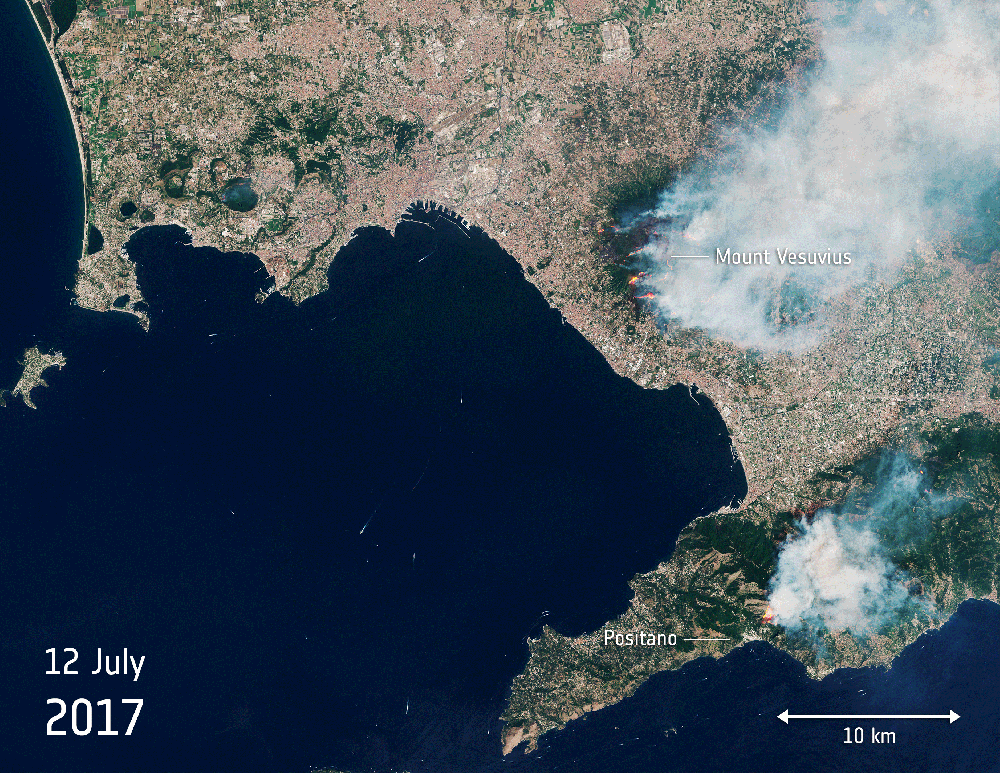The most immediate concern in the region of greater Naples would be associated with the two volcanic structures that enclose the region. But more pressing are the concerns that could revolve around potential activity of mount Vesuvius. Vesuvius has historically had major eruptions ten times, while it has had minor eruptions sporadically and documented as recently as April 5, 1944 (Smithsonian Institution, 2013).
Historically, eruptions had happened with little emergency preparedness by the local populous. However, with advancements of sensing volcanic activity, Naples may be more readily prepared to act in such an event. But even with the ability to prepare for such an event, the devastation of overwhelming volcanic ash and other airborne activity would threaten the region substantially.
Vesuvius is the most typical concern to most people in the area, as it is the more well known volcanic structure in the region and it has a consistent history of activity. However, if Campi Flegrei were to have a major event, experts argue that it would cause a more substantial devastation to the region (Robinson, 2011). Campi Flegrei is relatively closer to the metropolitan area of Naples than Mount Vesuvius, and it’s previous activity has help create many the landmarks and structures found in region (Robinson, 2011). The caldera created by this ‘supervolcano’ suggests that if this event were to happen again, it would cause catastrophic change to the structure of the land which Naples is built upon (Robinson, 2011).
Vesuvius is currently still active.

Although the volcanism in the area keeps a looming threat to the local population, the region is quite beautiful and the rich mineral deposits from the volcanic history has enriched the region with beautiful beaches, landmarks and fruitful potential agriculture.